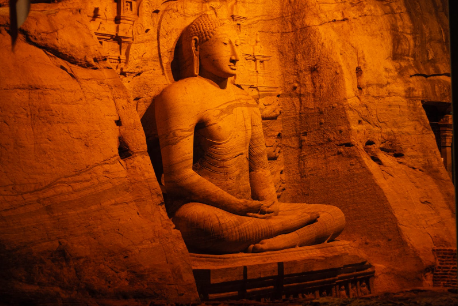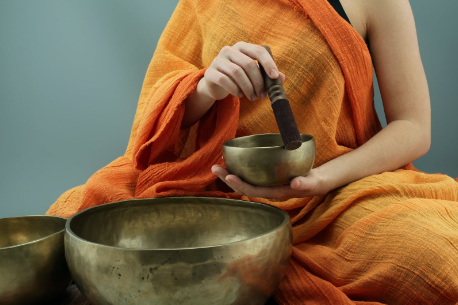Meditation Who Invented?
Discover who invented meditation and how they taught it.

Selfpause Affirmation App
Download the app to get 1,000’s of affirmation meditations and everything you need to write, record and listen to your own.
Meditation is a great way to improve your health and happiness. In fact, it’s so simple that you can do it for as long as you like. If you’d like to learn how to meditate, you can start by reading the following articles. These articles will introduce you to the different techniques and benefits of meditation.
John Cassian

John Cassian’s writings on spirituality and prayer are considered some of the most important documents in the history of Christian mysticism. They contain descriptions of the progressive degrees of contemplative prayer and the relation between it and spiritual life. The dialogues contain a variety of teachings from both Eastern and Western traditions.
According to Cassian, meditation can be defined as the state of constant and unbroken awareness of a mantra, which he calls a pure prayer. He views this state as a gift from God. He considers it the result of disciplined practice and considers it to be the fruit of direct perception of the Ineffable.
John Cassian’s method is based on the teachings of the desert monk Evagrius. His writings have influenced many famous Christian writers, including St. Thomas Aquinas, who kept Cassian’s Conferences on his desk. Later, John Main and the Benedictines adapted Cassian’s teachings for the benefit of laypeople and monastics alike.
Saint John Cassian lived in the West for several years, but his spiritual home was the Orthodox East. He died in 435. His holy relics are buried in an underground chapel at the Monastery of Saint Victor in Marseille. His head and right hand are also in the main church.
Many Christians believe that praying is reserved for experts. But the Bible says the practice of meditation is for ordinary people too. It was a way to help the Christians, especially the Carmelites, understand the mysteries of God.
Siddhartha Gautama

Meditation is a form of concentration and mindfulness. Siddhartha was able to practice this method by pitting his mind against his body. He only ate a single grain of rice a day. His ribs were sticking through his wasted flesh, but this did not discourage him. He also drank water and bathed in a river to cleanse himself. Then, he entered a village to look for food. A young girl offered him a bowl of rice. Eventually, Siddhartha realized that corporeal austerity was not the path to inner liberation or spiritual release. He began to eat rice and drink water, and eventually bathed himself in the Nairanjana River. Then, the five ascetics decided to leave him alone.
As his search for freedom deepened, Siddhartha sought the advice of ascetics. He listened to their teachings and followed their advice. Siddhartha also sought out the teachings of Udraka Ramaputra, who taught him how to suppress his unconscious and repressed desires. As he sought his own liberation, he abandoned his palace and his family. He eventually ate only a single grain of rice per day.
While Siddhartha was studying the teachings of the dharma, he also studied a variety of methods and teachers. He was intrigued by the idea of being able to focus on an object with great concentration. After observing this phenomenon, he thought that a focused state could lead him to freedom.
Johannes Schultz

Meditation is a form of relaxation that can help you relieve stress. It is a scientifically proven method that has numerous benefits. In addition to reducing stress, it also has the ability to improve your health. Johannes Schultz was inspired by a professor in Switzerland named Oscar Vogt, who had a great influence on the neurological sciences of the world. Professor Vogt found that patients who practiced a specific form of hypnosis were more likely to recover from physical ailments and experience improved overall well-being.
The idea behind this method was to develop techniques that would induce the body’s own self-regulation and perception of calming images. He also believed that passive concentration would help people achieve a relaxed vitality and avoid degeneration. This would allow them to maximize their potential and overcome any negative habits they had.
Autogenic training is similar to meditation and is often called the western form of meditation. It is not as religious or culturally specific as more traditional forms. The practice was created in the 1920s by a German psychiatrist named Johannes Schultz. He was studying the physiology of deeply relaxed states.
The practice of meditation spread across the world and was initially aimed at spiritual enlightenment. Since its inception, it has become an important part of the culture and spiritual life of nearly every country. However, the Industrial Revolution and the rise of materialism in the West led to a decline in interest in meditation.
Ainslie Meares

Ainslie Meares, an Australian psychiatrist, invented the concept of stillness meditation. This medically-based, Western style of meditation aims to reduce physical tension and promote profound mental rest. Its benefits are well documented, including lowered blood pressure, reduced anxiety, and improved quality of life. Moreover, it requires no special focus or positions. The Stillness Meditation method is also backed by the personal experience of Pauline McKinnon, who suffered from an anxiety disorder and attempted to conquer it through meditation.
Meares believed that stress increased brain impulses and elevated anxiety. He, therefore, proposed a solution for this problem: “psychic equilibrium”, which is a state of utter mental rest. He formulated his Stillness Meditation Therapy in order to help people achieve “psychic equilibrium” and activate a homeostatic mechanism. This is similar to atavistic regression, the biologically primitive state of mental rest.
Meares was born in 1910 in Melbourne, Australia. He was a successful psychiatrist who published a number of books on self-improvement. His passion for helping people changed his career path. In fact, he turned down an impressive practice to work with cancer patients. Through his compassionate approach, he taught patients that they could actually influence their own illnesses.
Meditation has many benefits for the body and mind. It can help people cope with stress and pain. In fact, meditation has been proven to improve performance in clinical settings.
Transcendental Meditation

In the late 1960s, Transcendental Meditation became a cult after Maharishi introduced it to the West. By the end of the decade, the Beatles spent a month at his ashram and wrote songs about it. Soon, a political party was formed, a gold-domed university was built in Fairfield, Connecticut, and hundreds of TM centers were opened throughout the country. By the 1990s, the Transcendental Meditation movement had five million practitioners in 130 countries.
Maharishi’s meditative technique is rooted in Neo-Vedanta metaphysical philosophy. His book Science of Being and Art of Living: Transcendental Meditation (1963) summarizes his basic philosophical position. “Being” is a state of unchanging reality that transcends human perception and is beyond time. It is associated with blissful consciousness and unmanifested existence.
The earliest recorded accounts of meditation date back to the first century BCE in the Pali Canon, a collection of scriptures in the Theravada Buddhist tradition. There is also some evidence linking the practice to Judaism. In the Torah, the story of Isaac going to lasuach in a field is understood to be a form of meditation.
Maharishi Mahesh Yogi is credited with developing the TM meditation technique. He was born in 1917 and studied physics at Allahabad University. During his tours of the world, he taught thousands of people about meditation. He also trained meditation teachers and built meditation centers. His popularity eventually spread to the West. He was even featured in Newsweek, Time, and Life magazines.
Our Top FAQ's
The origins of meditation are difficult to trace, as the practice has been a part of various spiritual and religious traditions for thousands of years. However, the earliest written records of meditation come from the Hindu tradition in India, where it was an integral part of the spiritual practice of yoga.
The practice of meditation is believed to have originated in India, and it has been an integral part of the spiritual and religious traditions of that region for thousands of years. The earliest written records of meditation come from the Hindu tradition in India, where it was an integral part of the spiritual practice of yoga.
Over time, the practice of meditation has evolved and been adopted by many different spiritual and religious traditions around the world. Today, meditation is practiced by people of many different faiths and belief systems, and it is often used as a tool for relaxation, stress reduction, and spiritual growth.
The primary goals of meditation are to quiet the mind, cultivate mindfulness and self-awareness, and promote a state of relaxation and inner peace. Many people also practice meditation for its potential health benefits, such as reducing stress, improving sleep, and reducing the risk of certain chronic diseases.
While meditation is often associated with spiritual and religious practices, it can be practiced by anyone, regardless of their faith or belief system. Many people who practice meditation do so for its potential health benefits, rather than for any religious or spiritual reasons.
